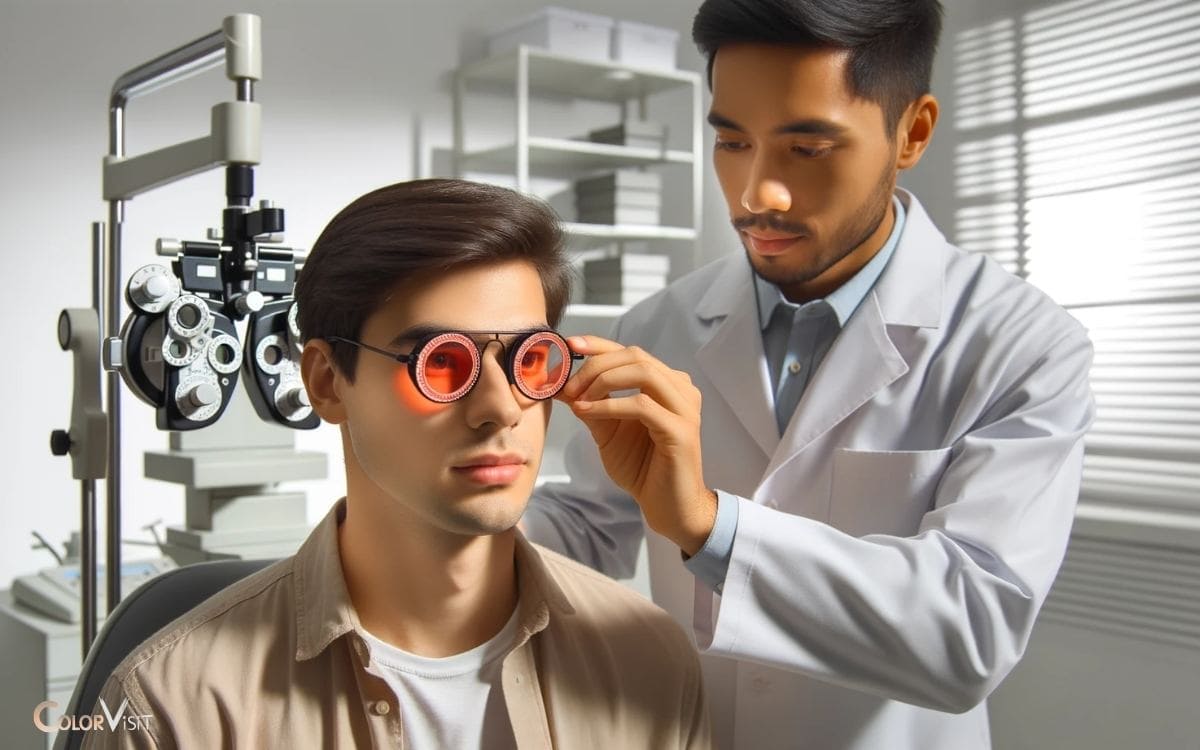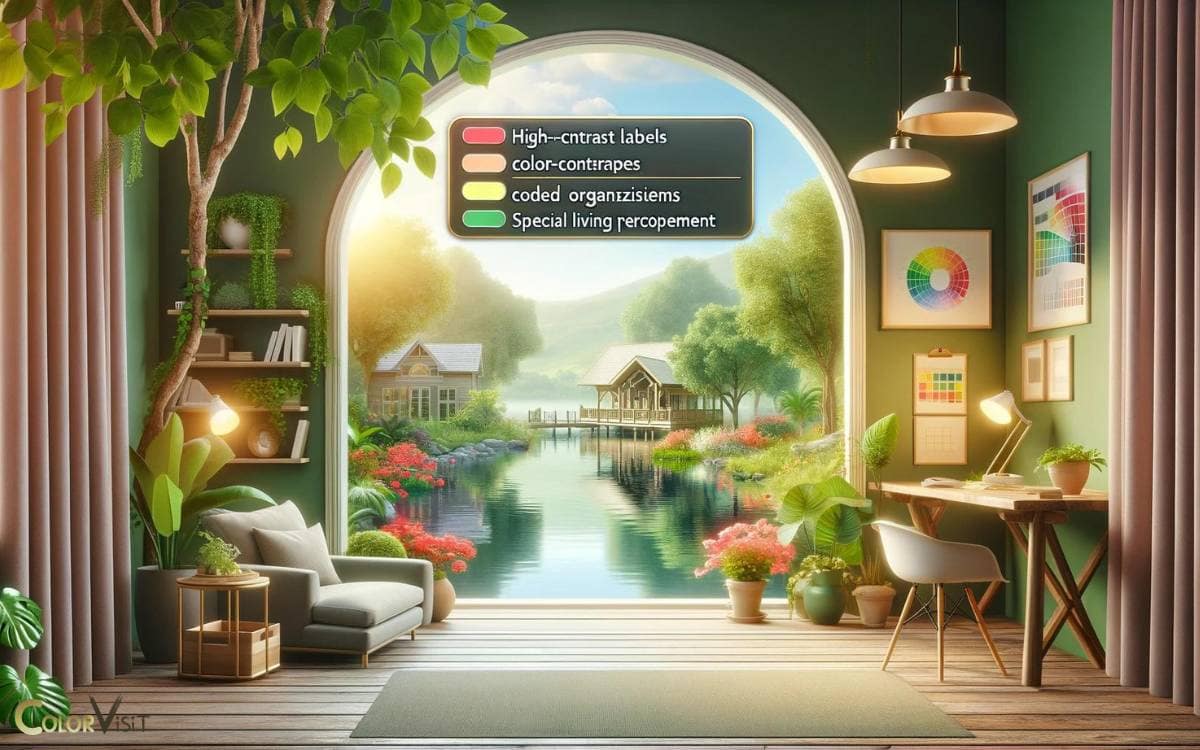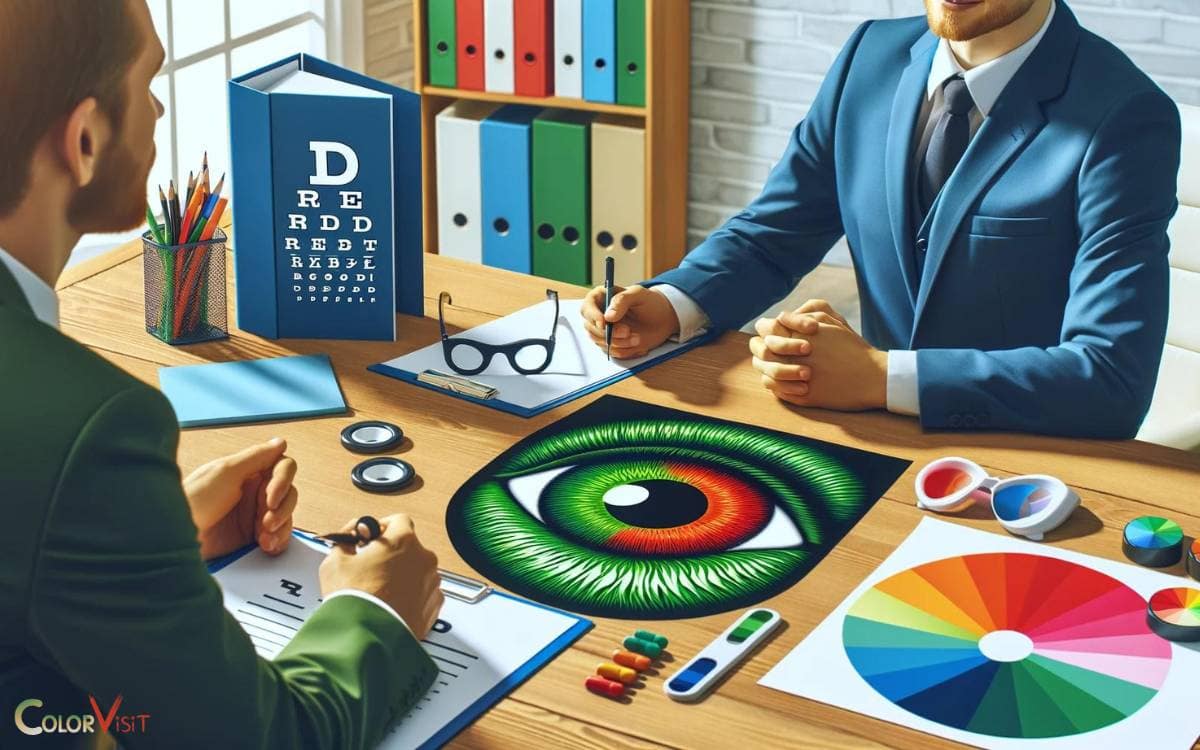How to Correct Red Green Color Blindness? 4 Steps!
Correcting red-green color blindness is achievable through the use of corrective lenses, color filters, and advanced technology.
There are several solutions available to help improve color perception:
Chroma glasses, a notable breakthrough in the field, have been a game-changer for individuals with red-green color blindness, enabling them to experience a broader spectrum of colors.
Key Takeaway
Step: 1 Understanding Red-Green Color Blindness
Understanding red-green color blindness begins with recognizing that it is a genetic condition that affects how individuals perceive and distinguish between red and green hues.
- This condition is caused by an inherited genetic mutation that affects the photopigments in the cone cells of the retina.
- As a result, individuals with red-green color blindness may have difficulty differentiating between certain shades of red and green, leading to challenges in everyday tasks such as reading traffic lights or interpreting color-coded information.
- Common symptoms include difficulty distinguishing between red and green colors, as well as seeing these colors as muted or dull.
Diagnosis of red-green color blindness involves specialized tests, such as the Ishihara color test, and management typically focuses on adapting to the condition through tools like color-corrective glasses or apps designed to assist with color recognition.
Step: 2 Corrective Lenses and Filters
Individuals with red-green color blindness can benefit from corrective lenses and filters designed to enhance their ability to differentiate between red and green hues.
Color correction glasses, such as the EnChroma glasses, use special optical filters to help individuals with red-green color blindness perceive a wider range of colors.
The following table provides an overview of some popular color correction glasses:
| Brand | Description | Key Features |
|---|---|---|
| EnChroma | Optical filters | Enhances color perception for red-green color blindness |
| VINO Optics | O2Amp glasses | Improves color vision for red-green color blindness |
| Pilestone | TP-012 glasses | Enhances color discrimination for red-green color blindness |
These innovative solutions offer hope for individuals with red-green color blindness, providing them with options to improve their color perception.
Step: 3 Technology and Color Correction Apps
Utilizing technology and color correction apps can frequently aid individuals with red-green color blindness in distinguishing between red and green hues.
- Color correction glasses, such as EnChroma and VINO Optics, use special filters to enhance the perception of red and green colors for those with color vision deficiency.
- These glasses utilize advanced light filtration technology to adjust the color signals received by the eyes, allowing the wearer to better differentiate between hues.
- Moreover, digital color filters integrated into smartphone apps, such as Chromatic Vision Simulator and Color Blind Pal, can adjust the colors displayed on the screen to make them more discernible for individuals with red-green color blindness.
These digital solutions offer customizable settings to adapt to specific types and levels of color blindness, providing tailored support for users in various situations.
Step: 4 Lifestyle and Environmental Adjustments
How can individuals with red-green color blindness make lifestyle and environmental adjustments to further enhance their ability to differentiate between red and green hues?
- Color Vision-friendly Lighting: Install LED lighting that mimics natural daylight, as it can improve color vision and perception for individuals with red-green color blindness.
- Contrast Enhancement: Use high-contrast color schemes for home and work environments, such as using dark-colored plates on light-colored tables, to aid in distinguishing between red and green objects.
- Color-coded Organization: Utilize alternative methods for organizing items, like labeling clothing with texture or patterns rather than relying solely on color coding, to simplify daily tasks and mitigate color vision challenges.
After implementing these lifestyle and environmental adjustments, individuals with red-green color blindness can significantly enhance their color perception and overall quality of life.
Seeking Professional Advice and Support
To address red-green color blindness comprehensively, it is essential for individuals to regularly seek professional advice and support from qualified eye care specialists.
- Professional counseling can provide valuable insights into the latest advancements in vision correction and management.
- Eye care specialists can offer tailored guidance on available treatment options, such as color-correcting glasses or contact lenses, and provide recommendations based on individual needs.
Additionally, support groups can offer a platform for individuals with red-green color blindness to share experiences, coping strategies, and emotional support.
Conclusion
Red-green color blindness affects approximately 8% of men and 0.5% of women worldwide.
While there is no cure for this condition, corrective lenses, filters, technology, lifestyle adjustments, and professional advice can help individuals manage and cope with their color vision deficiency.
It is important for those affected by red-green color blindness to seek support and explore the various options available to improve their color perception and overall quality of life.






